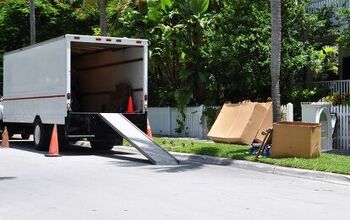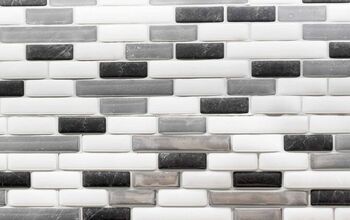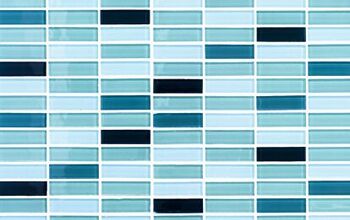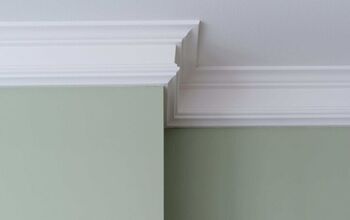Can You Use Peel-And-Stick Tile In A Shower?

Finding the right material for your shower walls can be tricky. Remodeling a shower can cost thousands of dollars, and it’s hard to commit to a material when you aren’t even sure what you want. Because of that, many homeowners will look for any alternative that gets the job done without breaking the bank. So, can you use peel-and-stick tile in a shower?
You can use peel-and-stick tile in a shower, and it only typically costs $3 per square foot. Peel-and-stick shower tile only lasts for 5-10 years in most cases, but it can last longer if your bathroom is well-ventilated, and you install the tiles properly. Make sure to leave your shower door open and run your bathroom fan after each shower to protect your peel-and-stick tile.
Carefully block out each section of your shower before you install the tile. That way, you can ensure that the peel-and-stick tile will lay evenly and the adhesive sticks to the shower wall. Follow along as we highlight everything you need to know about using peel-and-stick tile in a shower.
Can You Use Peel-And-Stick Tile For A Shower Wall?
You can use peel-and-stick tile for a shower wall. However, you must make sure that the peel-and-stick tile is waterproof, or it won’t last long. Otherwise, the adhesive will wear down and the tiles will slide off the shower wall.
Peel and stick shower tiles are a great way to save money compared to installing standard tiles. It can easily cost up to $1,000 or more to tile a shower with ceramic or porcelain tiles. Conversely, you can expect to spend as little as $3 per square foot to install peel-and-stick tile in your shower.
While peel-and-stick tile may not look quite as good as ceramic tile, it’s a great alternative. This is also a great temporary option if you don’t want to drastically alter your shower just yet. They are also cheap enough that you can justify reinstalling peel-and-stick shower tiles when they eventually wear out.
How Long Does Peel-And-Stick Tile Last In A Shower?
Depending on how well you apply it, peel-and-stick tile can last between 5 and 10 years in a shower. The lifespan of your peel-and-stick shower tile ultimately depends on the installation. Your peel-and-stick tile will last longer if you apply it evenly and don’t run the shower for up to 24 hours.
You risk ruining the adhesive backing if you run the shower too quickly after applying peel-and-stick shower tile. In that case, the tile may only adhere to the wall for a few months before it eventually peels off. Peel and stick tile can also weaken over time if your bathroom has poor ventilation.
This is especially true if you frequently take long, hot showers. Make sure to run the fan in your bathroom and leave the door open for up to 15 minutes after you take a shower. That will ensure that the moisture doesn’t weaken the tile’s adhesive backing.
TIP: Avoid pointing your showerhead directly at the peel-and-stick shower tiles. Prolonged direct water exposure can quickly weaken peel-and-stick tiles and they won’t last as long as they otherwise could.
Can You Use Peel-And-Stick Tile Over A Fiberglass Shower?
You can use peel-and-stick tile over fiberglass in your shower, but it’s not recommended. The adhesive will struggle to stick to the fiberglass surface. While the peel-and-stick tile may adhere at first, it won’t last long, as it will weaken much quicker when exposed to heat and moisture.
This can also create the perfect conditions for mold to grow. Mold and mildew can grow and thrive if water gets between the peel-and-stick tiles and the fiberglass surfaces in your shower. You can always paint over your fiberglass shower walls instead if you want to alter their appearance.
How To Install Peel-And-Stick Tile In A Shower
1. Clean The Surfaces
Before you do anything, make sure to clean the surfaces of your shower walls. The adhesive of your peel-and-stick tiles won’t work as effectively if your shower walls are dirty and or slick. Clean the shower walls with a mixture of warm water and bathroom cleaner or mild dish soap.
Leave the shower door open and run your overhead fan for as long as possible so the walls dry quickly. Don’t proceed until your shower walls are clean and dry, or else the peel-and-stick tiles won’t adhere to the walls.
2. Block It Out
Now, you need to block out the shower walls. Hold up the tiles without removing the backing, so you don’t expose the adhesive side. This will give you an idea of how the tiles will lay on the walls.
Use this chance to make sure the tiles will fit perfectly in your shower. If necessary, you can put painter’s tape on the wall to make sure that you evenly apply the peel-and-stick tiles. You can proceed if you are confident the tiles will fit.
3. Apply The Tiles
Now, it’s time to apply the tiles. Work in sections and only remove the backing from the sections of tile that you are using so the adhesive isn’t exposed to the air for too long. You can follow the blocking that you established in the previous step, but that may not be necessary.
Evenly lay each section of the tiles and smooth them out by hand. Apply pressure to the tiles, so they stick to the walls as evenly as possible before you apply another section. Take your time and repeat this process until you cover your shower walls with peel-and-stick tile.
4. Let The Tiles Sit
Letting the tiles sit and dry is the most important part of the process. The tiles may peel off the wall if you take a hot shower too soon after applying them. If possible, leave the shower alone for up to 24 hours before you take a shower, giving the tiles enough time to adhere to the walls. After that, you should be fine to take showers if you applied the tiles evenly and waited long enough.
Does Water Get Under Peel-And-Stick Tile?
Water can get under peel-and-stick tiles if it’s old or you failed to install it correctly. Peel and stick tile is water-resistant, but it isn’t waterproof. Waterproof implies that water won’t negatively affect a product or material.
Water resistance, however, means that a material or product can withstand some water exposure, but is still susceptible to it. Even though peel-and-stick tile is water resistant, you should still treat it as if it is quite sensitive to water. This will ensure that it lasts as long as possible.
Peel and stick tiles also fall victim to mold and mildew in some cases. This happens when an edge or section of the tile isn’t flush with the wall. Water can leak behind the tiles and spread, which can eventually lead to mold and mildew growth.
Do I Need To Seal Peel-And-Stick Tile?
You don’t need to seal peel-and-stick tile. However, you need to make sure that you apply enough pressure so that the tile will stick to the wall. You can use your hands or something like a rolling pin to ensure that the peel-and-stick tiles hug the shower walls closely.
Summing It Up
You can use peel-and-stick tile in a shower. However, you need to make sure that you lay it evenly, or else the tile may not last too long. Generally, peel-and-stick tile can last at least 5-10 years in a shower if you install it well and properly ventilate your bathroom when you shower.
Run your bathroom fan, leave the bathroom door open, and open your shower door after each time you take a shower. This will protect the adhesive backing, so it doesn’t peel away, and it will also stop mold and mildew from forming. Peel-and-stick shower tile is worth the cost because it can end up being hundreds or even thousands of dollars less to purchase and install compared to porcelain or vinyl tiles.
Related Guides

Nick Durante is a professional writer with a primary focus on home improvement. When he is not writing about home improvement or taking on projects around the house, he likes to read and create art. He is always looking towards the newest trends in home improvement.
More by Nick Durante


















![Cost To Drill A Well [Pricing Per Foot & Cost By State]](https://cdn-fastly.upgradedhome.com/media/2023/07/31/9074980/cost-to-drill-a-well-pricing-per-foot-cost-by-state.jpg?size=350x220)








